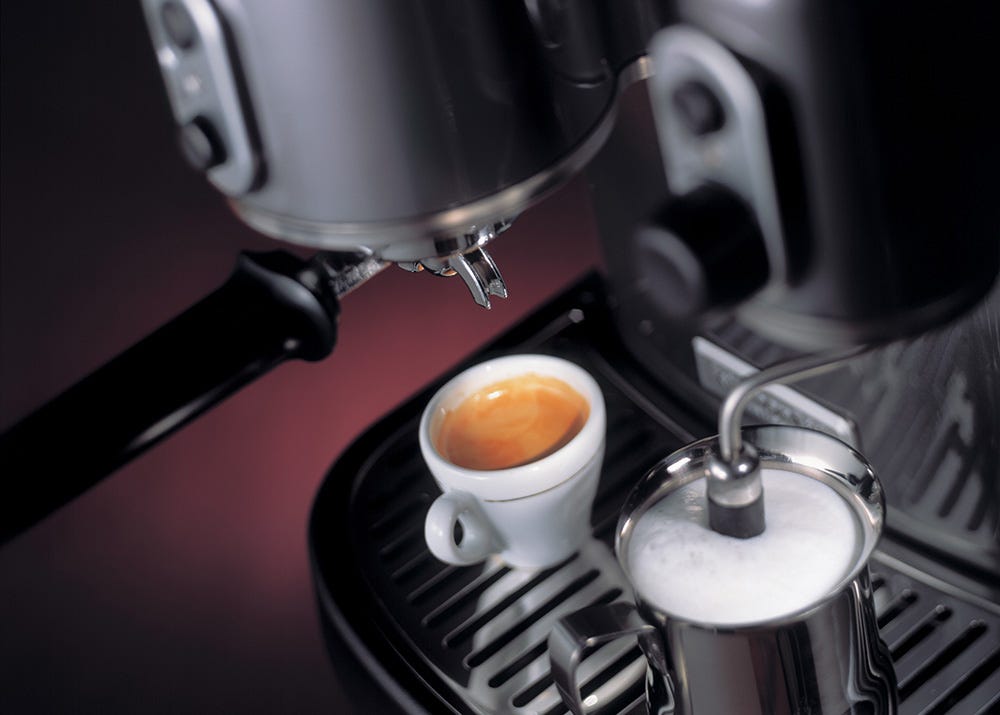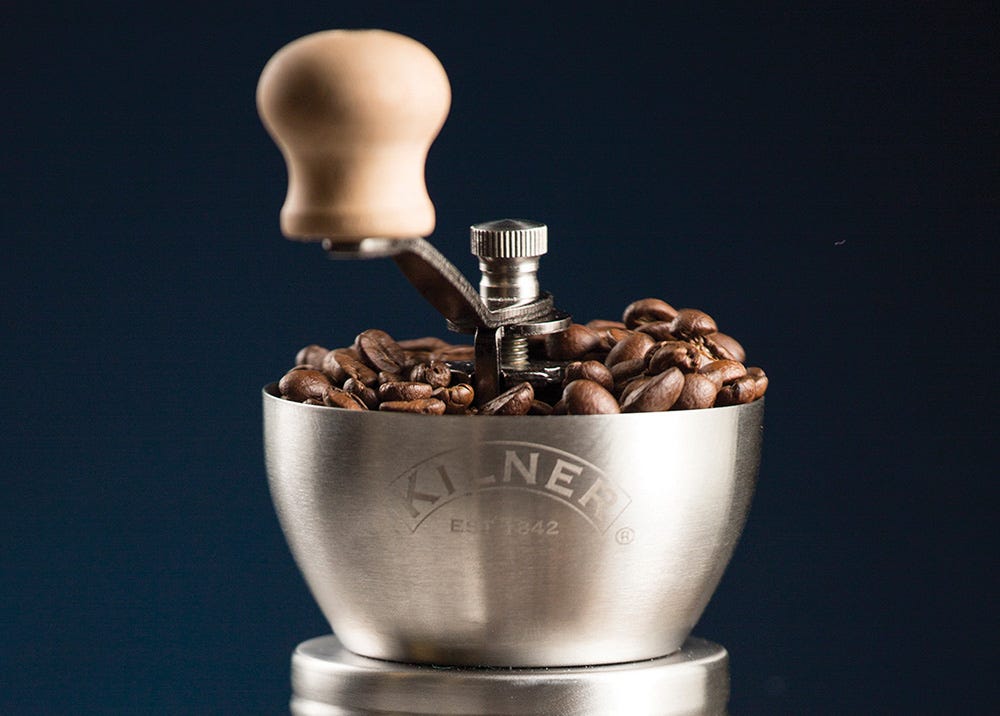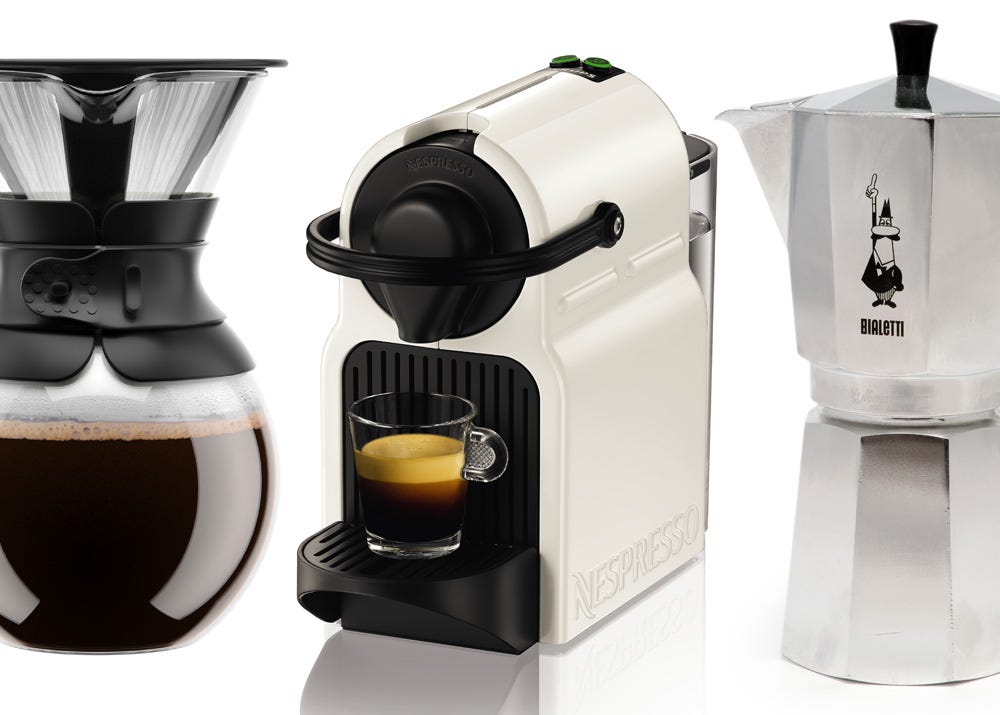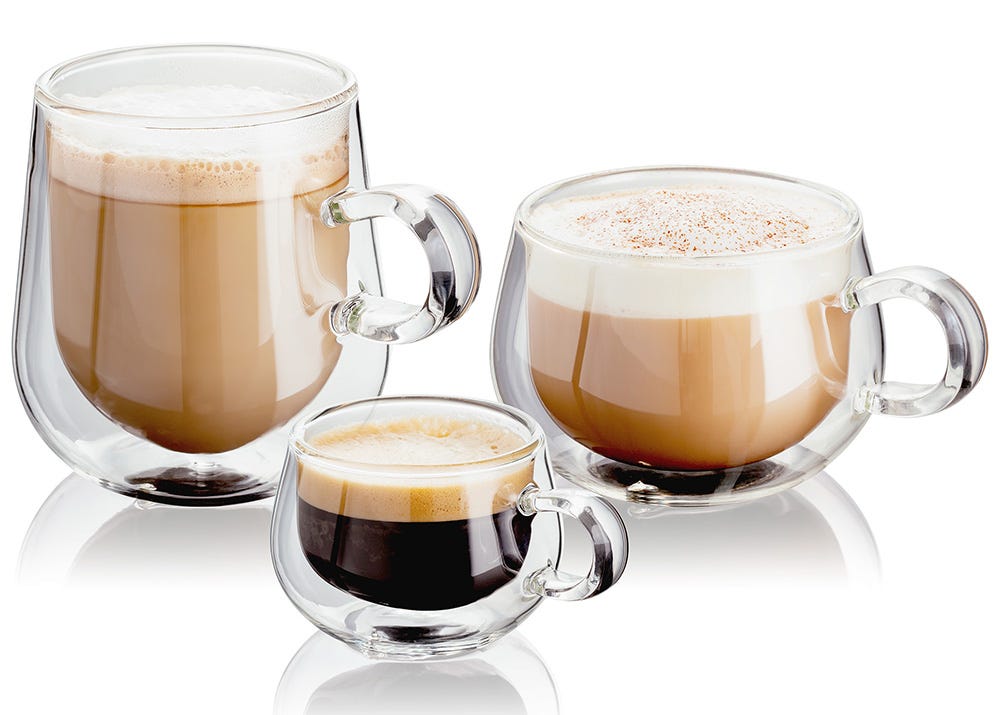Which is the best coffee machine for you?
Categories:
Don't worry if you missed our recent coffee machine demonstration day. This article, taken from our brand new magazine, 'Kitchen', explains how you can make barista quality coffee in your kitchen. All you need is the right coffee machine and some expert advice from Dorset’s foremost bean guru…  Following a career that spanned Whittards and Pret a Manger, Giles Dick-Read founded Reads Coffeein 1998. Today, he uses a 25-kilo roaster from Probat to roast some of the world’s finest beans. At weekends, you’ll find him doing the rounds at farmers markets and other local events, producing speciality coffee from the Grey Trailer. “I’m a great believer in taking your coffee the way you like it,” says Giles, clarifying his position as a coffee connoisseur, not a coffee snob. “I don’t think there are any great rules.” That said, it’s hard to miss his passion for the noble bean, and his belief that different methods bring out different qualities.
Following a career that spanned Whittards and Pret a Manger, Giles Dick-Read founded Reads Coffeein 1998. Today, he uses a 25-kilo roaster from Probat to roast some of the world’s finest beans. At weekends, you’ll find him doing the rounds at farmers markets and other local events, producing speciality coffee from the Grey Trailer. “I’m a great believer in taking your coffee the way you like it,” says Giles, clarifying his position as a coffee connoisseur, not a coffee snob. “I don’t think there are any great rules.” That said, it’s hard to miss his passion for the noble bean, and his belief that different methods bring out different qualities.
To bean or not to bean
“The principle reason is that beans keep brilliantly. They’re the closest you can get to the pod, and the coffee keeps much better as a bean. In fact, you can actually freeze beans, whereas you shouldn’t even chill ground coffee.” As coffee is very hydroscopic, keeping grounds in a refrigerator makes them damp and likely to absorb other odours. The rule for storing ground coffee is “cool, dry, dark and airtight” according to the master.
Grind your own
The freshest cup of coffee with the most intense aroma will come from freshly ground beans, so investing in a mechanical or electric grinder is essential for entering the major leagues. “It’s one of the critical components of making good coffee,” says Giles. However, he recommends weighing up precision versus speed. “If you’re making after dinner coffee for 10,” he says, “you’ll want an electric grinder. Hand grinders can give you an extremely fine coffee, but you’ve got to have the patience of a saint.” As with any purchase, you get what you pay for. But, Giles warns, “a £25 hand grinder will massively outperform a £30 electric grinder in its ability to grind a range of grounds.” If you’re just grinding coffee for a cafetiere, an electric grinder will do, though.  “For cafetiere coffee, you want a coarse grain of coffee, and a medium-fine grind for filter. For a domestic espresso grind, that’s where you benefit from a top-end grinder, like the Sage or KitchenAid. Avoid the cheaper electric ones, which make a lot of noise.” Sage Smart
“For cafetiere coffee, you want a coarse grain of coffee, and a medium-fine grind for filter. For a domestic espresso grind, that’s where you benefit from a top-end grinder, like the Sage or KitchenAid. Avoid the cheaper electric ones, which make a lot of noise.” Sage Smart
Choose your coffee making method
Automatic bean to cup coffee machine. You used to only see these coffee machines in commercial coffee outlets, not least because they can come with quite a price tag. They do give you all the advantages of beans and the freshness of ground coffee and, brilliantly, are now available in your own home. “They’re a wonderful kitchen gadget and make a decent espresso,” Giles says. “But you need to know how to look after them.” Filter coffee machine. Forget that pot of bitter brew sitting in the corner of your office kitchen. Filter coffee can be magical. “All the purists head for filter coffee,” explains Giles. “It’s the ultimate form of coffee. You really get the best flavour out of the bean.” A filter coffee machine, whether porcelain, plastic or pour-over, has the advantage of handling any type of coffee grounds, from fine to coarse. French press. “These are great for bulk brewing, such as for a dinner party,” Giles recommends. “They’re easy to get hold of, fairly inexpensive, and you can brew any coffee. But you must get your proportions correct.” Since the grounds in a French press (also known as a cafetiere) sit in the water, Giles advises drinking the coffee within ten minutes. With a filter brew, on the other hand, you can enjoy the coffee for longer if kept warm. Stove-top espresso. “They’re the classic Italian espresso for a superbly strong coffee,” says Giles. “This is the one I have every morning for a big hit, but not during the day.” Stove-tops work by forcing hot water under pressure through fine coffee grounds. The coffee has a very distinctive flavour and characteristic. A word of warning, however: “They’re one of the most sensitive brewing methods – the opposite of a cafetiere. It’s easy to boil the coffee, so you have to use the right ground coffee and take it off the heat in time.” Turkish. Not perhaps for the uninitiated, Turkish coffee involves bringing a short dose of pulverised grounds to the boil in a small metal (usually copper or brass) beaker. “It produces a really good coffee, and it’s fun,” says Giles. “It’s best done over gas so you have control over the heat.” The disadvantage is that the grounds inevitably make their way into the final coffee, which also packs quite a kick. On the bonus side, you can experiment with a whole range of added spices, from cinnamon to cardamom. Cold brew. The rise in popularity of coffee in the US came from instant coffee drunk during World War II. By necessity, this tended to be made from a cold brew concentrate extracted over time from coffee grounds. Giles is a fan. “You can either water it down or drink it neat, but you’ll end up with a lot of caffeine.” Because cold brew has a light and refreshing finish, it’s often used as the base of iced coffee or coffee cocktails. Pod or capsule coffee machine. “They’re phenomenally popular,” admits Giles. “Their big selling point is that they’re attractive, clean and simple. All the grubbiness of coffee is wrapped up in a capsule. There’s no skill, so you can’t mess it up if you’re in a rush, and you’ll get the same quality every time.” That said, they should be part of the armoury, not the main weapon. “The capsules only have about 5g of coffee, whereas you’re using about 15g in a cafetiere, so you’d need several capsules for a large batch of coffee,” he advises. Siphon.These work in the opposite way to the stove-top, using a vacuum to suck the water through the grounds, rather than forcing water through under pressure. “Siphon coffee is very clean and pure, like high quality filter coffee,” says Giles. “It’s a good, smooth coffee, and the ultimate dinner party weapon.”
 The cup final
The cup final
“If you’re in a hurry, use a pod coffee machine. If you’re having a dinner party, then the cafetiere is the one. For a humdinger coffee at the weekend, a stove-top with some ground beans.”
Accessories
Milking it. Beyond the basic kit, there’s an array of accessories to consider, particularly if you want to emulate the skill of your friendly local barista. Use a frother, for example, to promote your espresso to a latte or cappuccino. Within reasonable limits, Giles warns: “There’s not much point in trying to turn a filter coffee into a cappuccino. It’s best with cold milk to keep the flavour. But a mocha or espresso is delicious with hot milk.” Cups. The right cup will also make a difference. Short and delicate for an espresso, shallow and wide for a latte or cappuccino.  So there you have it. In the wise words of an expert, enjoy your coffee in whatever style you like it, but elevate the quality of your brew by following a few simple tips to bring out the very best of the ingredients.
So there you have it. In the wise words of an expert, enjoy your coffee in whatever style you like it, but elevate the quality of your brew by following a few simple tips to bring out the very best of the ingredients.
